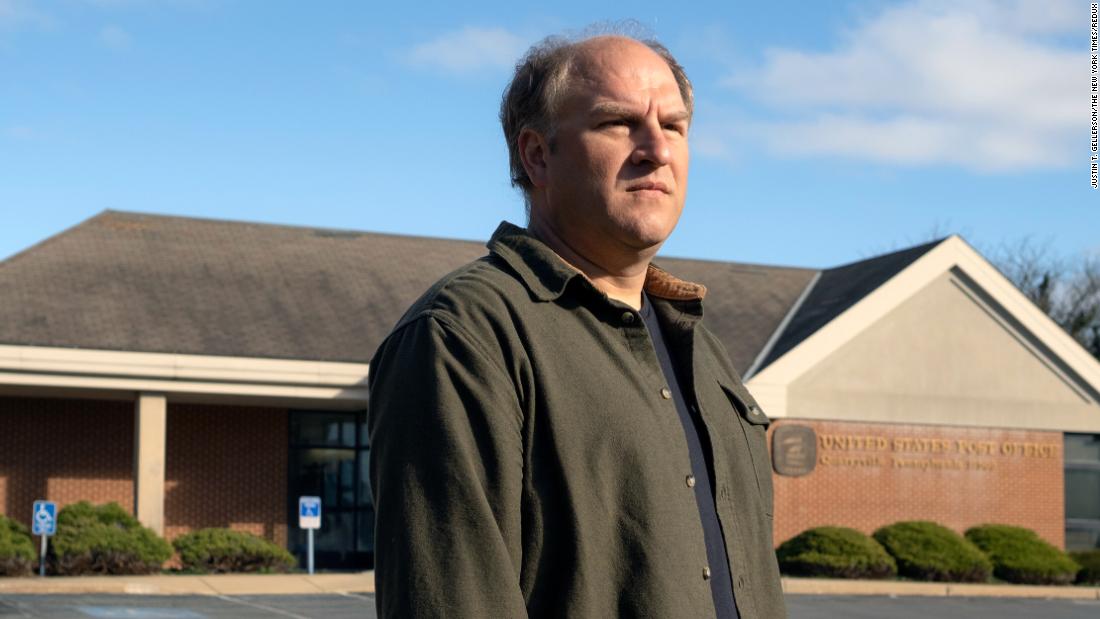FOR over 130 years, the case of Britain’s most notorious serial killer, Jack the Ripper, has remained unsolved.
With over one hundred suspects but no convictions, the identity of the brutal murderer who trawled the dimly-lit streets of London‘s East End has been an enduring mystery – until now.
Mary Evans Picture LibraryA sketch depicting the discovery of one of the victims in 1888[/caption]
Criminologist David Wilson opened up to The Sun about how he believes he uncovered Jack the Ripper’s real identityFacebook
SuppliedAaron Kosminski’s DNA was found on a bloodied shawl, and David thinks he was Jack the Ripper[/caption]
A leading criminologist has revealed to The Sun that he’s not only pinpointed the man behind the notorious slayings, but he has also uncovered an unknown sixth victim.
The Ripper case was the first to cause a worldwide media frenzy, and fervent speculation continues to this day about the killer’s identity.
Between 1888 and 1892, five women – many believed to be prostitutes – were slain in Whitechapel, east London, and had their throats cut and bodies mutilated.
As the grisly catalogue of crimes grew, the brutality escalated, and each body was found more mutilated than the last.
Police believed this was the work of a single killer, nicknamed Jack the Ripper, after a letter from someone claiming to be the murderer was written to the press, taking credit for the sickening three-month crime spree.
Over the years, morbidly curious Brits have swum in a never-ending well of speculation as to who the killer was, even birthing the term “Ripperologist” for the niche interest.
Wild theories sprang up alleging the Ripper could have been Queen Victoria‘s grandson, a post-Impressionist painter, or former Prime Minister William Gladstone.
However, David Wilson, who specialises in murderers and serial killers, inputted eleven deaths into a computer system and used profiling to narrow down the suspect list to just one man – a Polish barber.
David told The Sun: “It is absolutely easy to tell you who Jack the Ripper is. It’s Aaron Kosminski.”
Some historians are divided on the theory that Kosminski was the Ripper, but David has now revealed exactly why he fits the profile.
He explained how – according to his criminal profiling work – the Pole was “sexually incompetent” and the Ripper would likely have been single.
But, despite several of the women being prostitutes, he doesn’t think the killings stemmed from a desire to buy their services.
Instead, their occupation allowed him to get close enough to strike.
Due to the manner in which he killed, David believes the Ripper was likely insane and, because the killings took place near one another, that the killer lived locally.
Kosminski lived in Sion Square, Whitechapel – an area which no longer exists on modern-day maps.
The criminologist theorised that because the attacks always happened in the early hours of a Friday or weekend, the Ripper would have been an “unskilled” worker and busy in the week.
GettyA sketch of Jack the Ripper in one of his notorious slashing attacks[/caption]
WHO WAS JACK THE RIPPER: THE SUSPECTS
Montague John Druitt – schoolmaster who died by suspected suicide
George Chapman – barber who was hanged for poisoning three of his wives
Aaron Kosminski – lived in Whitechapel and was admitted to an asylum in 1891
James Maybrick – Liverpudlian cotton merchant murdered by his own wife but had a diary confessing to the murders
Thomas Neill Cream – doctor found guilty of poisoning many women and hanged in 1892
Thomas Heynes Cutbush – doctor with syphilis in the brain known to have stabbed multiple women
Prince Albert Victor, Duke of Clarence and Avondale – it was alleged he fathered a child in the Whitechapel area and suspected either he or several others committed murder on his behalf to hide the indiscretion
Michael Ostrog – a Russian doctor and convicted criminal who carried out multiple scams and frauds
Francis Tumblety – an Irish-born American who earned a small fortune posing as an Indian Herb doctor and was often in conflict with cops
Walter Sickert – a prominent painter who was fascinated with the Ripper case
While many Ripperologists discounted the Pole suspect because he had no medical training, David countered that there was no evidence of surgical knowledge in the murders.
The Ripper was “the bloke next door” – who was protected by others for most of his life, David says.
And – the criminologist argues in his new book A History of Modern Britain in Twenty Murders – that there was a sixth victim who was brutally killed a few weeks prior to the first victim, Mary Ann Nichols.
Jack the Ripper’s ‘unknown victim’
He believes the very first woman slain by the Ripper was Martha Tabram, who was found with 39 stab wounds.
The mum-of-two – who had turned to sex work after falling on hard times – was discovered at 5am in front of a block of flats on August 7, 1888.
And although this was three weeks before Jack the Ripper began his killing spree, David believes the 39-year-old was the first victim.
He put the details of eleven Whitechapel murders from 1888 into HOLMES (Home Office Large Major Enquiry System).
The computer ruled out five that didn’t fit the pattern – but Martha Tabram’s death did fit.
David explained how he became convinced Kosminski was Jack the Ripper after using it.
It would mean a lot to me, to my family, to a lot of people to finally have this crime solved.
Karen Miller relative of Jack the Ripper victim
He told The Sun: “For one of the documentaries I did for the BBC with Amelia Fox, I got the entire Whitechapel docket run through HOLMES.
“HOLMES is the Home Office Large Major Enquiry System, which was introduced in the wake of the failings related to the search for the Yorkshire Ripper. So it’s an information retrieval system.
“And for the documentary, I got the lead trainer to run the Whitechapel docket.
“All the murders of women in Whitechapel from 1888 through to 1890, I got the lead trainer to run all those through Holmes.
“And that lead trainer identified six murders, not five murders.”
This discovery, combined with geo-profiling – a technique to pinpoint where a killer likely lives based on crime locations – drastically narrowed down the extensive list of suspects.
“That allowed me to really identify who Jack the Ripper was,” David said.
Killer’s identity ‘revealed’
Kosminski, who was in his mid-twenties, lived with his brother and sister in Sion Square, in the centre of the murder sites.
Medical records say he suffered from mental health issues since 1885, becoming paranoid and hearing voices.
The Polish-born immigrant was a strong suspect for the police at the time.
Cops thought the 23-year-old had a “great hatred of women”, especially prostitutes, and “strong homicidal tendencies”.
A map marking where the women were killed in relation to where Kosminski lived
SWNSAnother suspect was eccentric self-promoter Francis Tumblety[/caption]
A photo card for early suspect Michael OstrogWhitton & Laing/BNPS
Hyam Hyams, a lunatic who became progressively more violent as his mental state collapsed, was another in the frameCasebook – Stewart P. Evans
But they had little evidence and feared being accused of antisemitism.
The youngest of seven children, Kosminski was born near Warsaw in 1865.
His dad died when he was eight years old and, in 1882, the family fled antisemitism in Poland – settling in the East End of London instead.
The head of the London CID, Dr Robert Anderson, strongly believed him to be the Ripper, but there wasn’t enough evidence to lock him up.
After a suspected schizophrenic breakdown in 1890, Kosminski was detained in an asylum.
He threatened his sister with a knife, and he was committed to the Colney Hatch lunatic asylum in north London the following year.
He died 28 years later.
This isn’t the first time evidence has emerged against the Polish barber.
Earlier this year, DNA was tested from a shawl found at the scene of one of the Ripper’s crimes.
The bloodstained item was found on Catherine Eddowes’ body and bought at auction so a test could be carried out.
One of Kosminski’s relatives was happy to share her DNA for his to be tested against.
And it was a “100 per cent match” to the Polish barber.
However, some experts were sceptical and criticised the methodology – and the case remained open.
Karen Miller, 53, the great-great-great-granddaughter of Ripper victim Catherine Eddowes, called for an inquest to officiate Kosminski as the killer.
“It would mean a lot to me, to my family, to a lot of people to finally have this crime solved.”
Jack the Ripper’s ‘first victim’ Martha Tabram, according to David Wilson
AlamyAn illustration of Jack the Ripper’s first murder[/caption]
AlamyCatherine Eddowes was murdered in Mitre Square[/caption]
Hulton Archive – GettyThe front page of a newspaper reports on the ‘ghastly’ murders of Jack the Ripper[/caption]
Between August and November 1888, Martha and five other women met a savage end on the streets of Whitechapel in the early hours of the morning in a sickening killing spree.
After Martha, the Ripper’s next victim, Polly Nichols, was found dead at 3.40am on Friday, 31 August in Buck’s Row.
Her throat had been cut with a knife penetrating as far as her backbone – then her abdomen was “carved” open and her genitals were stabbed in an act of overkill.
The monster’s next victim, Annie Chapman, was seen going into 29 Hanbury Street at 5am on Saturday, September 8.
Her throat was cut, her abdomen slashed entirely open, and her uterus removed.
In the early hours of September 30, Liz Stride had her throat cut in Dutfield’s yard, but it’s thought the killer was interrupted because she was not mutilated.
His long-lasting fame is because of the Ripperology, the phenomenon of Ripperologists who are constantly wanting to ID who might have been responsible
David Wilson criminologist
The same morning, Catherine Eddowes was murdered in Mitre Square.
Her throat was cut, her abdomen was ripped open by a long, deep, jagged wound, and the left kidney and the major part of the uterus had been removed.
Her bowel was draped over her shoulder, and for the first time, he attacked the victim’s face – cutting both eyelids, cutting the nose and slashing around the mouth.
Cops believe this amount of overkill was triggered by a sick need to compensate for being disturbed earlier in the day.
The Ripper’s final act of mutilation was on Mary Jane Kelly, who was the youngest at just 24.
The young woman was butchered in her own bed in an ordeal thought to have lasted up to four hours, as the killer remained undisturbed in her room.
The 24-year-old’s face had her cheeks, eyebrows, nose and ears partially removed and several cuts all over her face.
Her throat was slit, and both breasts removed, and she was partly disembowelled.
Jack the Ripper’s fame
David focuses on the victims rather than the killers in his upcoming book, starting with the Ripper in Victorian England and ending with the murder of Sarah Everard by police officer Wayne Couzens.
In the case of the Ripper – and many other killers throughout history – vulnerable women are targeted because “they won’t be missed”.
And while the speculation surrounding his identity has certainly fuelled his infamy, David said the Ripper is the most famous because he was one of the first to be covered so extensively by the media.
“Even though there were serial killers before Jack the Ripper, he’s the one who’s come to public attention in the widest possible sense.
Out now: A History of Modern Britain in 20 Murders
By David Wilson
In the case of Jack the Ripper, I’d note that there was no evidence of sexual assault, and that he was ‘act-focused’ – all of his victims were killed quickly.
He didn’t torture them while they were alive, but when he had time to be alone with a dead victim, he mutilated her abdomen and sometimes her face. He removed body parts and sometimes took other ‘trophies’, such as Mary Ann Nichols’s ring.
The mutilation of the abdomens has sexual overtones, but I’d suggest that Jack the Ripper wasn’t sexually competent, and consequently was single.
While he did murder several women who were involved in selling sex, his choice of victim doesn’t seem to have stemmed from a desire to buy those services. Sex workers simply allowed him to get sufficiently close to commit his crimes.
The timing of his attacks is also significant. They always occurred in the early hours of the morning on a Friday, Saturday or Sunday. This would suggest that he had some form of unskilled work that occupied him during the week, and no opportunity to be alone.
In other words, it was only at the weekend that he was away from those who knew him, were related to him, or were living with him. All of the attacks occurred in a very narrow geographical area, which strongly suggests that he lived locally.
Jack the Ripper was undoubtedly a white man of limited intelligence and education, under the age of forty-five. From the nature of his offences, it seems highly unlikely that he would’ve been interested in writing letters to the press.
There’s also no real evidence of any medical training or surgical knowledge in his crimes – he simply seems to have been curious about the internal organs of women. Finally, the nature of the murders he committed suggests that he was insane.
“His long-lasting fame is because of the Ripperology, the phenomenon of Ripperologists who are constantly wanting to ID who might have been responsible.”
Jack the Ripper has almost transcended into an urban myth due to his notoriety and the length of time since the killings, and the case is ground zero for true crime obsession.
So much so that some forget the very real tragedy that befell his victims and left women in Victorian London terrified to leave their homes.
Morbidly, there are even Jack the Ripper walking tours for tourists visiting the capital – but one, called Guts and Garters in the Ripper’s East End, was axed following complaints.
One disgusted tour guide even quit because people would treat the case as a “silly made-up story”.
David says: “There is almost a bipolar approach to women in British culture, which seeks to sexualize women and then punish them for being sexual.
“And that irony was something that struck me time after time after time in researching and writing the book, that I was constantly aware of never learning lessons.
“We didn’t learn lessons from what happened in the 1920s, in the 1980s.
“We never learned those lessons, and those repeated patterns were one of the things that fascinated me, as a criminologist and as a historian.”
Out now: A History of Modern Britain in 20 Murders is published by Sphere, Hardback, Audio and eBook £25 and David discusses it on his upcoming book tour.
How many victims were there?
Mary Ann Nichols
Mary Ann was the first canonical victim of Jack the Ripper. She was a 43-year-old prostitute, married with five children.
On August 31, 1888, at 3:40 am, a man named Charles Allen Cross was walking to work when he discovered what he initially believed to be a tarpaulin lying on the ground in front of a gated stable entrance in Buck’s Row, Whitechapel – approximately 150 yards from the London Hospital.
Nichols laid on her back with her eyes open, her legs straight, her skirt raised above her knees, and her left hand touching the gate of the stable entrance.
There was no obvious initial indication she was murdered, with Cross telling the constable: “She looks to me to be either dead or drunk, but for my part, I believe she’s dead.”
But doctors later discovered Nichols suffered two deep slash wounds to the throat, inflicted from the left to the right of her neck, before her murderer had mutilated her abdomen.
Annie Chapman
Although previous murders linked to Jack the Ripper had received considerable press and public attention, the murder of Annie Chapman generated a state of panic in the East End of London.
On September 8, shortly before 6:00 am, Annie’s mutilated body was discovered by an elderly resident of 29 Hanbury Street named John Davis.
Her body was lying on the ground near the doorway to the back yard, with her head six inches from the steps to the property.
Doctors were quickly able to establish a definite link between Chapman’s murder and the murder of Mary Ann Nichols, which had occurred over a week earlier.
Chapman also had her abdomen mutilated, and a blade of similar size and design had been used in both murders.
Elizabeth Stride
Elizabeth Stride is thought to be the third murder victim of Jack the Ripper.
Unlike the other victims, Stride had not been mutilated following her murder, leading some historians to suspect Stride had not actually been murdered by Jack the Ripper.
However, Stride’s murder took place less than one hour before the murder of the Ripper’s fourth victim, Catherine Eddowes – within walking distance.
And her act of murder is suspected to have been disturbed by an individual entering the crime scene upon a two-wheeled car.
Stride’s body was discovered at approximately 1:00 am on Sunday September 30 by Louis Diemschutz on Dutfield’s Yard – a narrow yard situated between No. 40 (the International Working Men’s Educational Club) and No. 42 Berner Street.
Diemschutz noticed a body in the road after driving down the poorly lit yard with his horse and two-wheeled cart.
Blood was still flowing from a single knife wound inflicted to Stride’s neck and, although her hands were cold to the touch, other sections of her body were either slightly or “quite” warm – suggesting Stride was killed shortly before Diemschutz got to the yard.
Catherine Eddowes
At 1:44 am on Sunday September 30, Eddowes’s mutilated and disembowelled body was found lying on her back, with her head resting on a coal hole in the south-west corner of Mitre Square by the square’s beat policeman, PC Edward Watkins.
Later that night, at approximately 2:55 am, a blood-stained fragment of Eddowes’s shawl was discovered at the passage of the doorway to a building nearby.
This section of shawl was also contaminated with sections of faecal matter.
On the wall above the section of shawl was a crude chalk graffito—the letters measuring approximately three-quarters of an inch—commonly held to have read: “The Juwes are the men that Will not be Blamed for nothing”.
The message suggested a Jew or Jews in general were responsible for the series of murders, although it is unclear whether the graffito was actually written by the murderer upon dropping the section of shawl, or was merely present at the location.
Mary Jane Kelly
Mary Jane Kelly is widely believed to have been the final victim of Jack the Ripper.
At the time of her death, she was approximately 25 years old, working as a prostitute, and living in relative poverty.
On the morning of November 9, Kelly’s landlord, John McCarthy, sent his assistant, Thomas Bowyer, to collect the rent – Kelly was six weeks behind on her payments, owing 29 shillings.
Shortly after 10:45 am, Bowyer knocked on her door but received no response.
He then attempted to turn the handle, only to discover the door was locked.
Bowyer eventually made it into the room and discovered Kelly’s extensively mutilated corpse lying on the bed.
She is believed to have died between three and nine hours before the discovery of her body.
AlamyThe London Post covered the case as the murders unfolded[/caption]
Hulton Archive – GettyAn imagined portrait of the unidentified serial killer known as Jack the Ripper, circa 1890[/caption] Published: [#item_custom_pubDate]















































































































